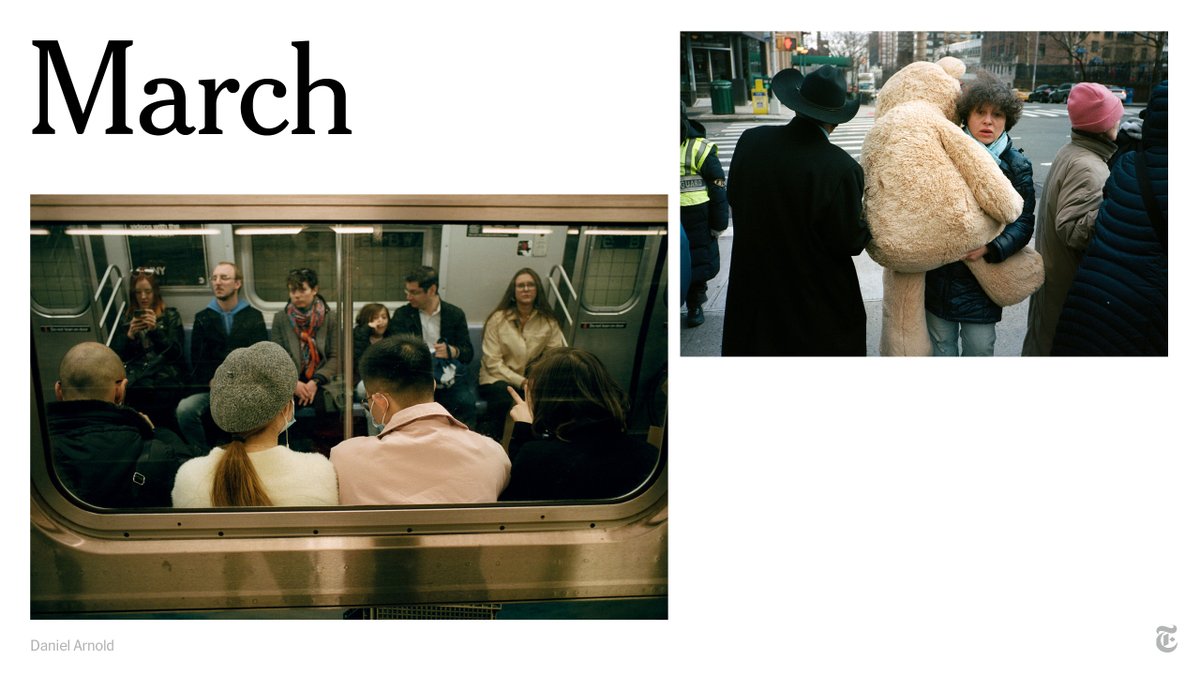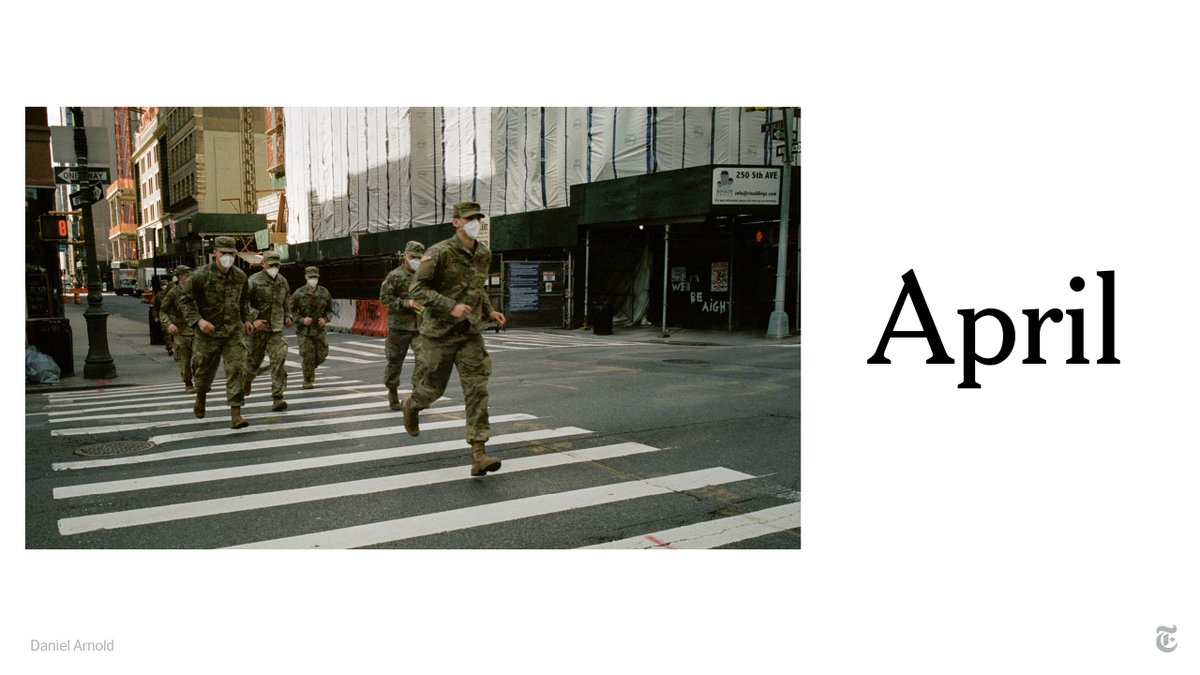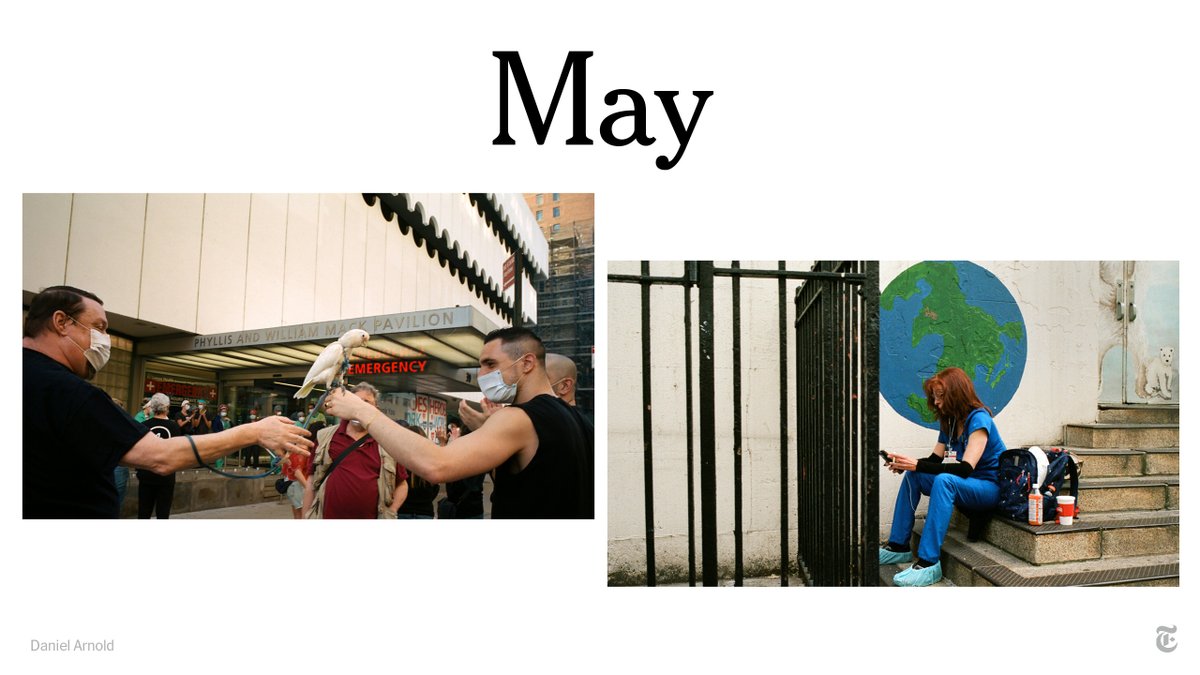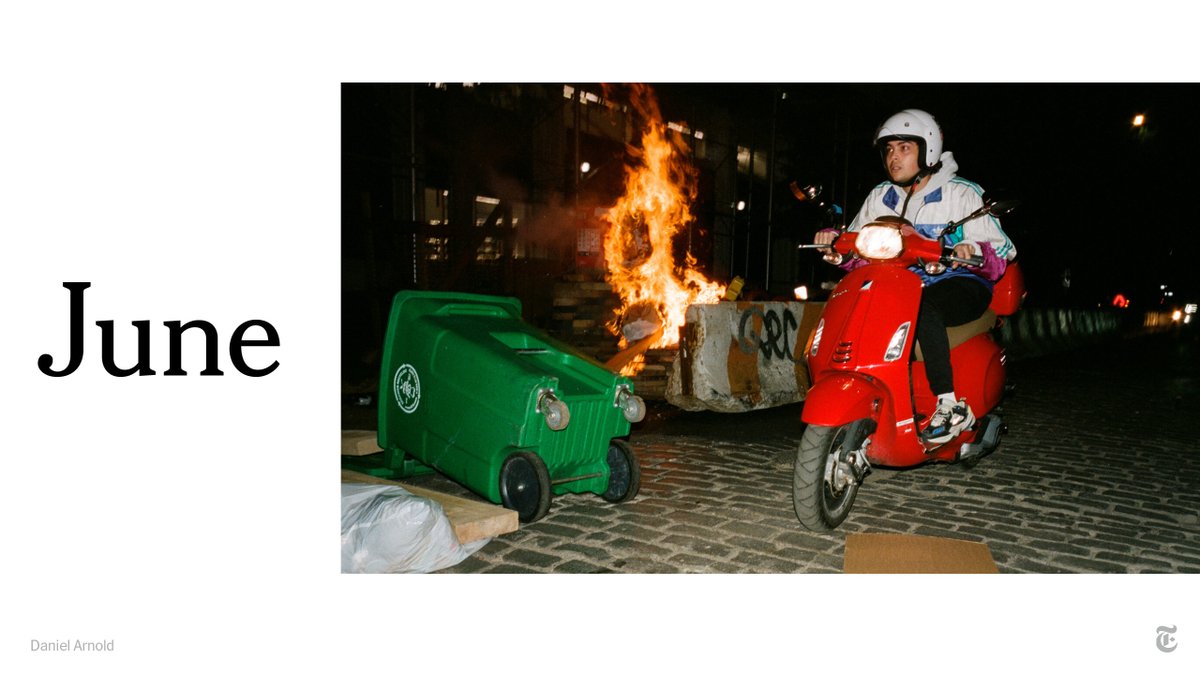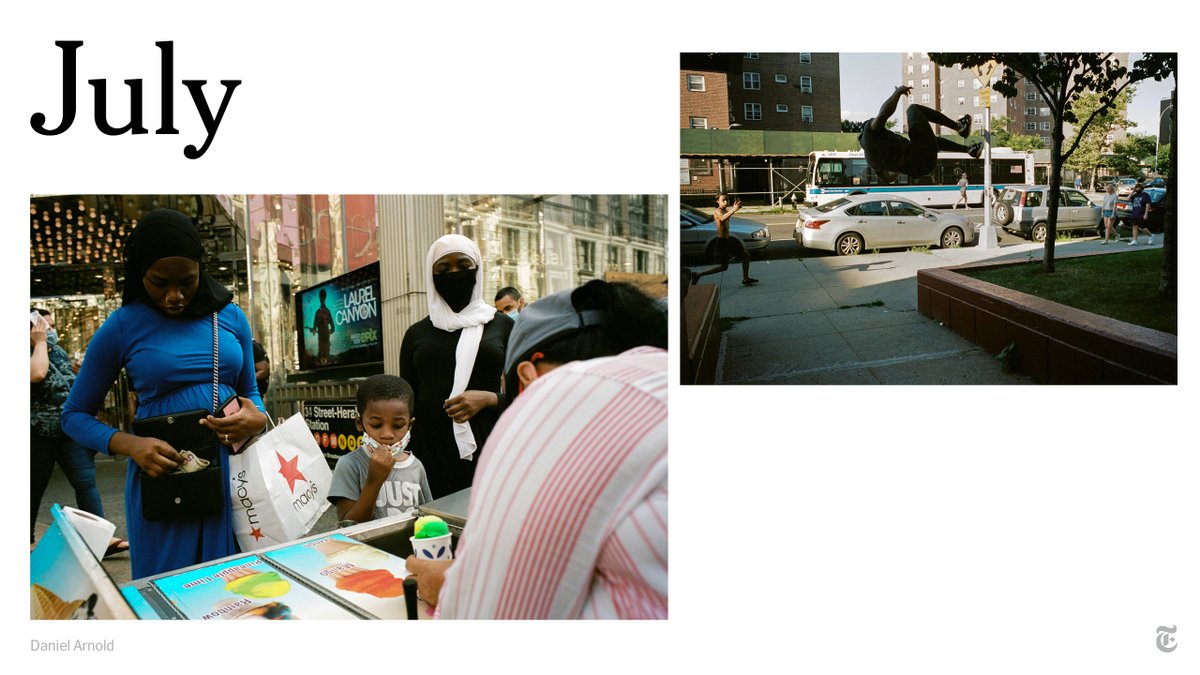There's never been a year like this one in New York City. @dodaistewart, an editor on our Metro desk, knows.
Not once in her lifetime living there — not the snowstorm of 1983, 9/11, or Hurricane Sandy — did the streets fall as quiet as they did in March. https://nyti.ms/2PDCHMS
Not once in her lifetime living there — not the snowstorm of 1983, 9/11, or Hurricane Sandy — did the streets fall as quiet as they did in March. https://nyti.ms/2PDCHMS
By April, the silence gave way to non-stop sirens, echoing off near-empty buildings.
"The governor was counting, counting, counting, as the numbers of infected people went up, up, up," @dodaistewart writes. "My friends and co-workers and their loved ones were sick."
"The governor was counting, counting, counting, as the numbers of infected people went up, up, up," @dodaistewart writes. "My friends and co-workers and their loved ones were sick."
On the last Monday in May, George Floyd was killed in police custody. It felt like something had been unleashed: passionate demonstrations all day, fireworks at night. The city's first curfew since World War II was imposed. The protests continued.
"At some point it dawned on me that I was working as an editor at The New York Times, on the New York desk, during a gigantic moment in New York's history," @dodaistewart said. 23,000 had died of the virus by June. "How does one process grief for an entire city?"
Later, in July, 5 months into the crisis, the city hit Phase 3. Outdoor dining returned. Beaches opened, then pools. There were kids eating Italian ices in the street and men opening up fire hydrants. It almost felt like Old New York.
It's not, of course. http://nyti.ms/2PDCHMS
It's not, of course. http://nyti.ms/2PDCHMS

 Read on Twitter
Read on Twitter